hello
Why You Might Feel a Light Electric Shock When You Touch Someone
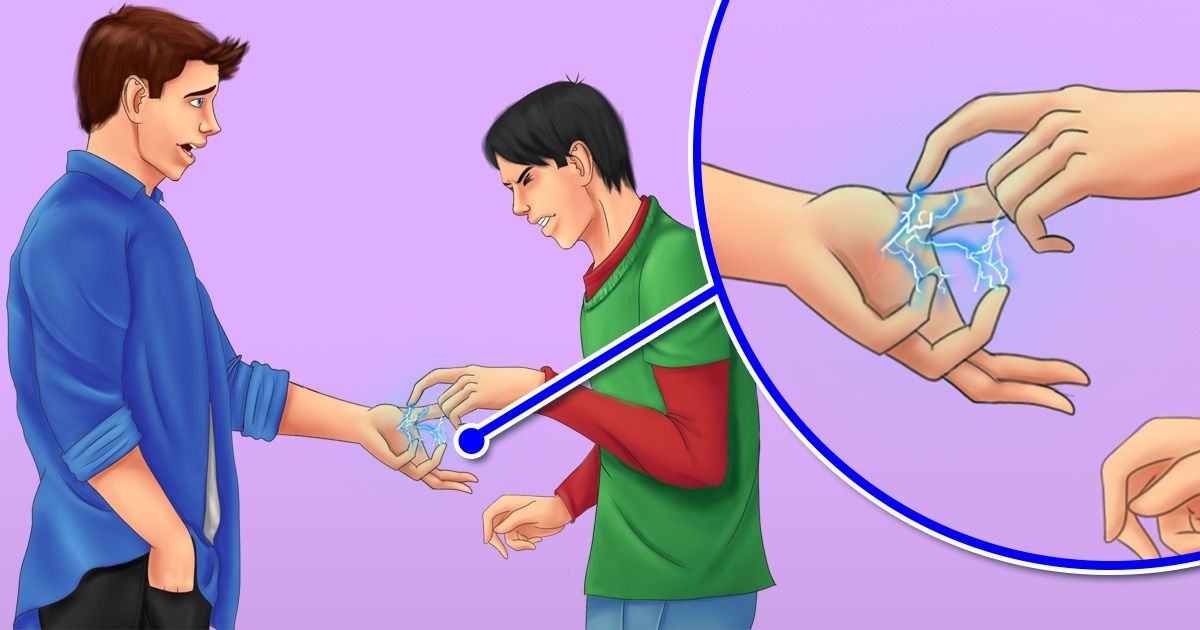
The human body can carry wonderful surprises for us. Think, for example, of the fact that we’re sometimes able to conduct electricity in small amounts to other objects. Have you ever received light electric shocks when approaching someone or touching an object? If you’ve wondered why this phenomenon occurs and how it works, this is a good opportunity to finally get some answers to your questions.
Bright Side explains how our body is able to give and receive these little shocks and found some tips on how to avoid it from happening.
The atoms in our body have positive, negative, and neutral energy.
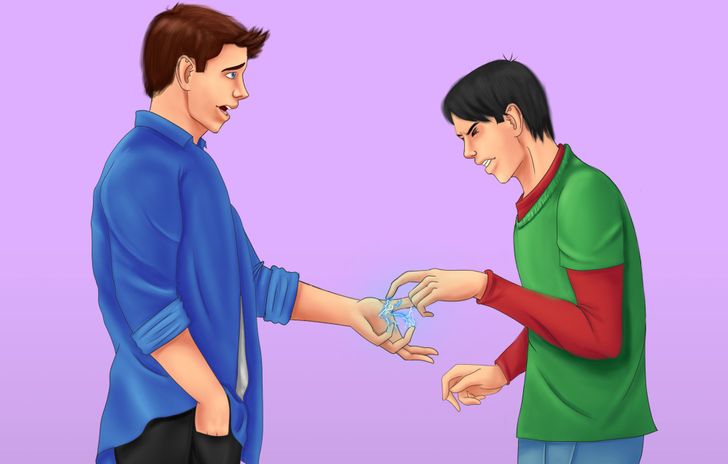
Everything around us is made up of atoms and, of course, that includes the human body. Atoms, in turn, are made of protons, electrons, and neutrons. Each of these has a positive, negative, or neutral charge, respectively, and without exception. And while atoms generally have a somewhat stable number of these 3 types of particles, electrons tend to travel from one place to another all the time. That means that they can move from our furniture to our clothes, and from there to the shoulder of a colleague when we greet them and give them a tap on the shoulder or a handshake.
Static electricity is what happens when the negative energy isn’t balanced.
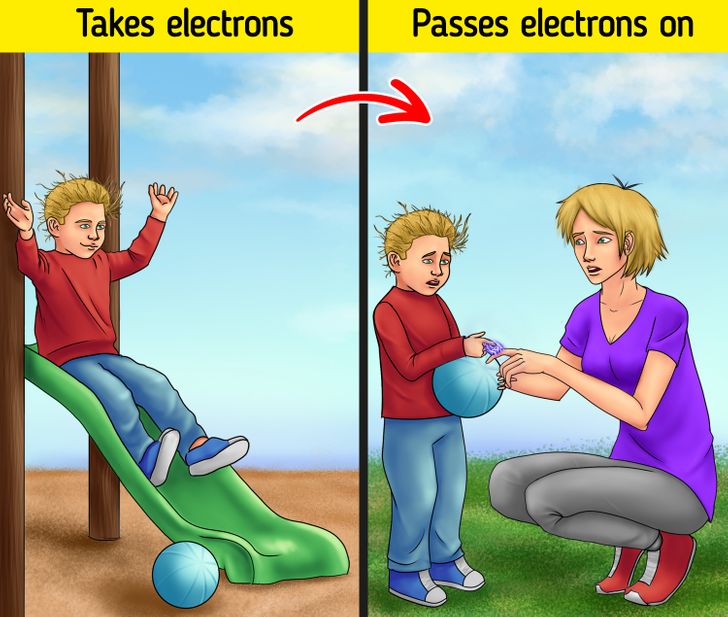
When there’s a lack of balance between electrons and protons, or in other words, an imbalance of negative and positive energy, something that scientists refer to as static electricity is created. Regardless of its complicated name, you’ve probably created static electricity yourself. For example, if you’ve ever rubbed your hair against a balloon, you’re actually doing that — you’re “picking up” a few electrons more than what you had before. However, if a little while later, you approach a positively charged object, think, for example, of a metal object or anything made of a conductive material, you’ll probably feel a little electric shock. These are the electrons moving from one place to another, trying to regain balance.
Small electric shocks are more common when the weather is cold and dry.
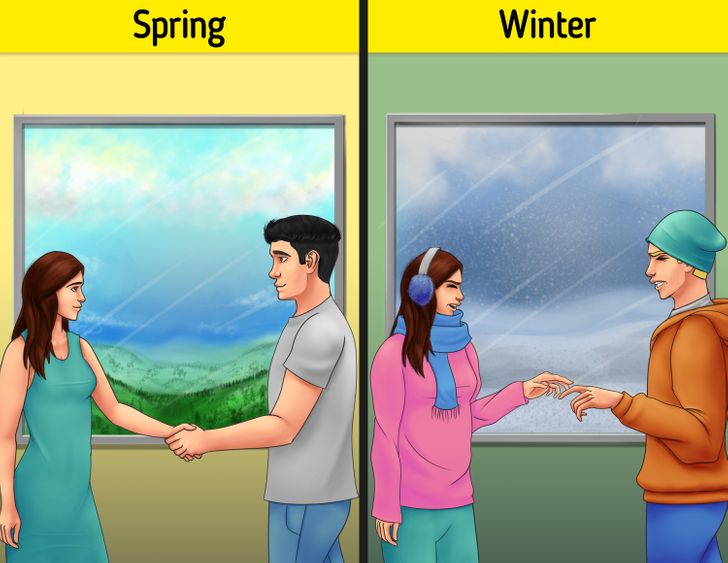
During the winter, or in parts of the world where the climate is especially dry and cold, static electricity may be more frequent. This is due to the fact that humid air is actually a natural conductor, which, funnily enough, can help to avoid stronger discharges, such as those that take place in environments where humidity is lower. In the case of the latter, the lack of humidity could cause frequent electrical discharges when one is handling or touching certain surfaces.
There are certain materials that give us their electrons and others that make us “send out sparks.”
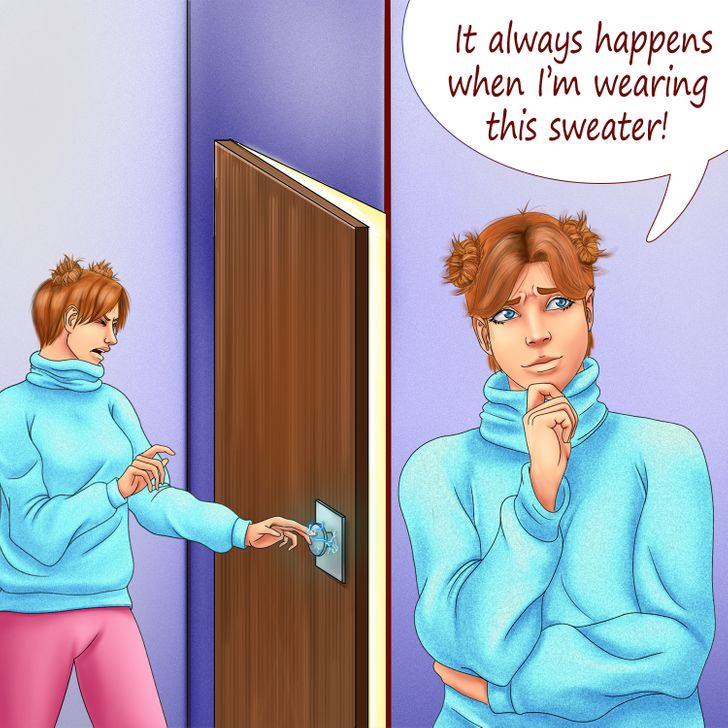
As you probably already knew, metals are the main conductors of electricity — so much so, that they are used to create special objects whose sole purpose is to conduct electricity. However, there are also fibers, such as polyester, that have a low level of conductivity and can still be involved in the transit of electricity traveling from one place to another when we suddenly give or receive these light electric shocks. Polyester, for instance, is found in many objects that we use in our daily lives including furniture and clothing.
Tips to avoid light electric shock

There a few easy steps you can take if you want to prevent this phenomenon from being a nuisance in your daily life.
- Don’t use rubber shoes when walking on static-producing floors.
- Make sure to humidify your rooms if you suspect the cause behind the static to be cold and dry conditions.
- Use clothes made of cotton to avoid creating static every time you put them on.
- Keep your skin moisturized.
- Touch metal constantly so that the static is released in small batches instead of all at once.
- There are also anti-static products that can help you clean surfaces.
What do you do when you have static and give off these small discharges? Do you avoid contact or do you have a technique you use to get rid of the electrical imbalance?
Comments
this also happens to me because of my hair
winter pain when we all wear sweaters 😅
Related Reads
11 Safety Tips All Women Should Know Inside Out

8 Cool Psychological Tricks to Read People’s Minds

12 Situations That Prove Some Stereotypes About Relationships Actually Make Sense
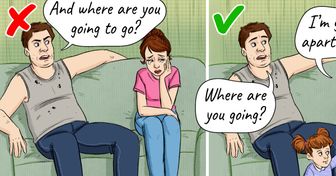
20 Times Karma Bit People at the Most Unexpected Moment

Psychologists Defined 7 Types of Love, and Very Few People Experience the Last One

18 Photos That Perfectly Answer the “What Happens If...” Question

I Demanded Compensation for My Work Injury—My Boss Got HR Involved

14 Unresolved Nanny Stories That Keep Us Guessing

12 Stories So Wild They Might Break the Internet

My Parents Excluded Me From the Inheritance, So I Refuse to Host Christmas Dinner for Free

I Refuse to Let My MIL Stay in My Home After She Crossed a Serious Boundary

11 People Who Chose Kindness Over Looking Away
